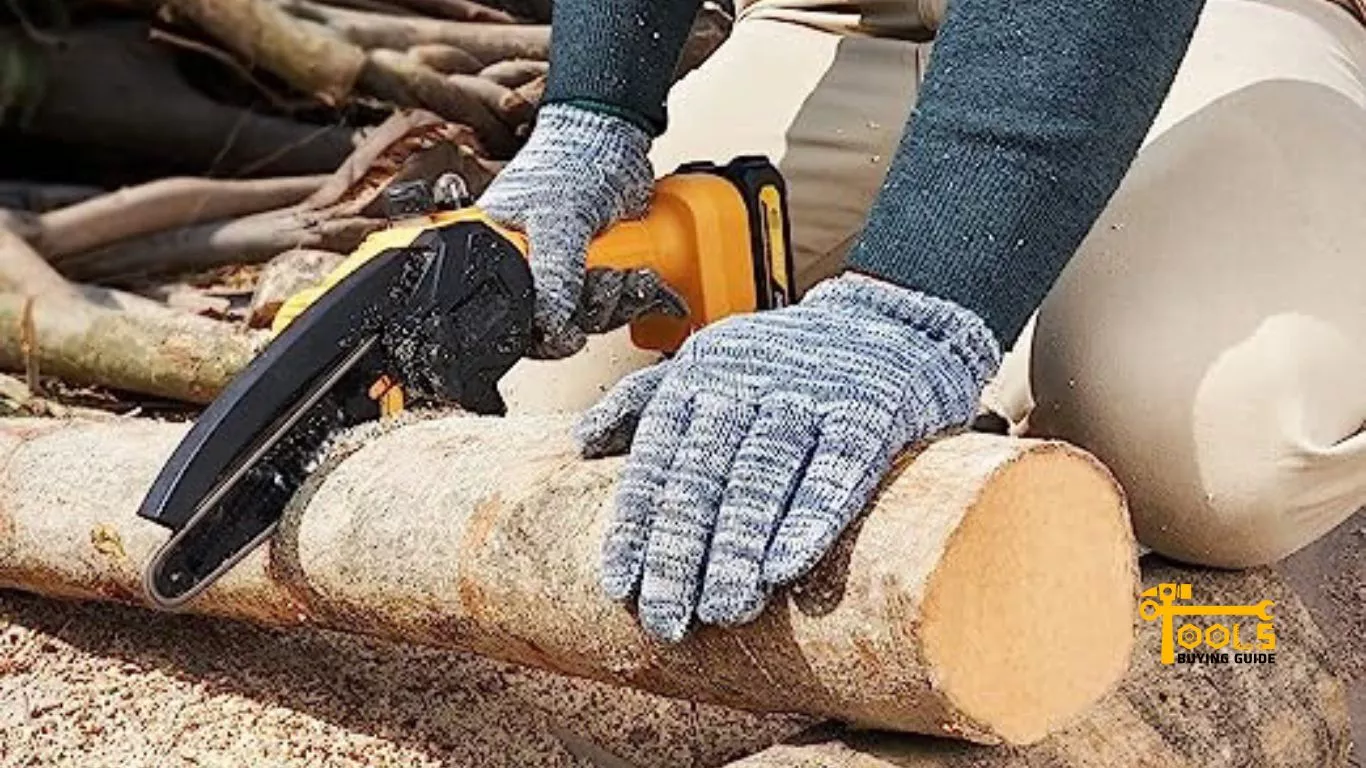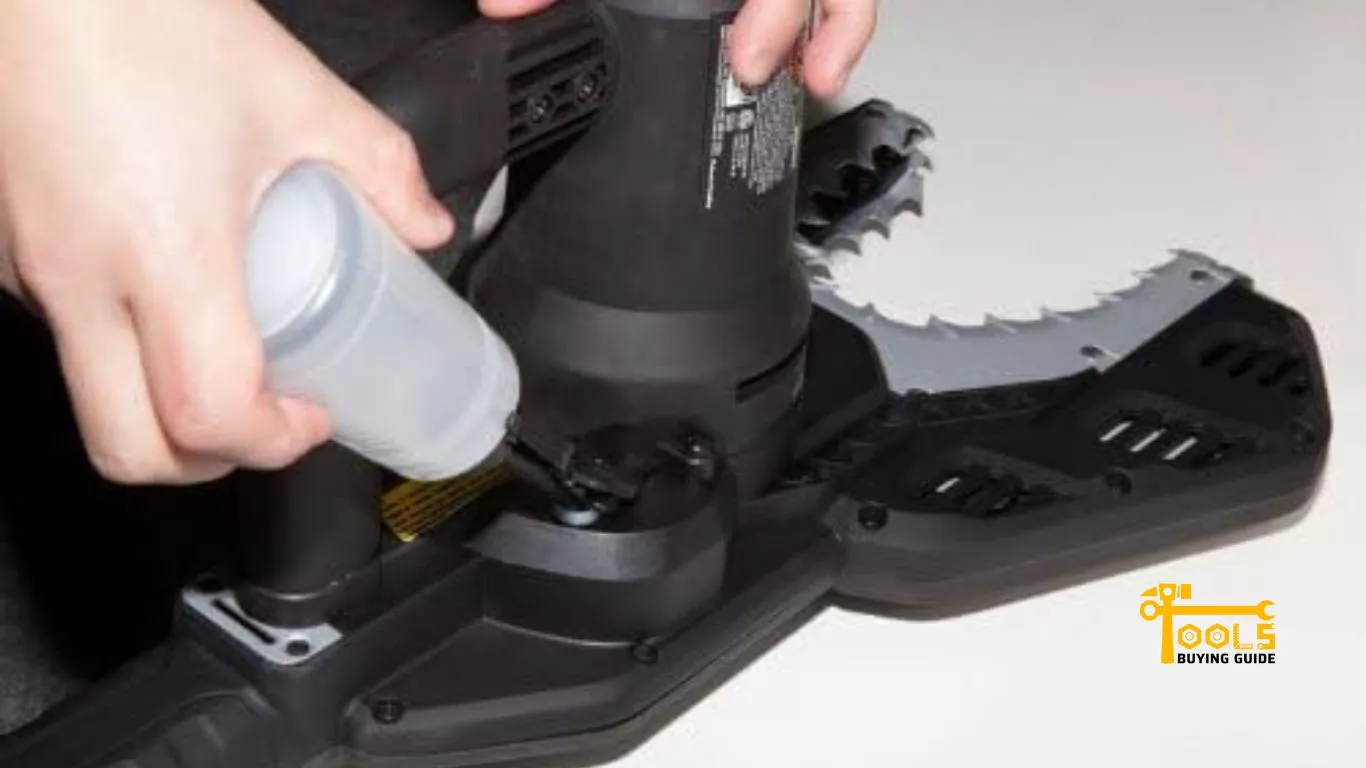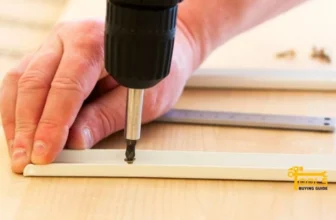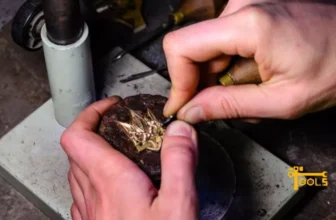
Have you ever wanted to make a quick cut with a mini chainsaw? Not only do they come in handy for small projects, but they’re also incredibly easy to use. You only need to remember that you must oil your mini chainsaw to keep it running smoothly. To know exactly how to oil a mini chainsaw correctly, keep reading.
What is a Mini Chainsaw?
A mini chainsaw is a small, lightweight version of a traditional chainsaw. It is designed to help you with small jobs such as cutting logs and trimming branches. It can even be used indoors if the job calls for it. Mini chainsaws are also great for gardening and landscaping due to their ability to maneuver easily in tight spaces.

The light weight of the mini chainsaw also makes it a great tool for camping or other outdoor trips. You can quickly and easily make a nice fire without lugging around a bulky chainsaw. This makes the mini chainsaw one of the most versatile tools for your outdoor excursions.
Do Mini Chainsaws Need Oil?
Oiling your mini chainsaw is key to keeping the saw running smoothly. Without proper lubrication, the blades can wear down quickly and become blunt. This will make it harder for them to cut as effectively. Additionally, the blades are more likely to overheat and cause damage if they’re not properly lubricated.
Lubrication also helps keep dust and dirt from building up on the saw’s parts, which can lead to rusting or other wear-and-tear issues down the line. All these factors make it important to oil your mini chainsaw regularly to ensure that the saw runs smoothly and effectively.
Preparing the Mini Chainsaw for Oiling
Before you oil the mini chainsaw, some things need to be done to ensure that the process runs smoothly.
Step 1: Disconnect the spark plug and clean the chain bar
The first step is to disconnect the spark plug from the mini chainsaw. The spark plug is the small metal part located at the end of the chainsaw’s handle. It is responsible for igniting the fuel and providing power to the saw. Unplugging it helps ensure the mini chainsaw cannot be accidentally started while oiling it.
You should clean the chain bar once the spark plug has been disconnected. This involves wiping down the bar with a soft cloth to remove any debris, dirt, or sawdust that might be clogging it up. Make sure to get into all the crevices and corners of the bar to clear away anything that could potentially interfere with the oiling process.
After the chain bar has been cleaned, it’s time to move on to the next step: removing the cover plate and oil cap.
Checkout: Chainsaw Chain For Hardwood
Step 2: Removing the cover plate and oil cap
The cover plate and oil cap are located on the front of the mini chainsaw, just beneath the handle. The cover plate is a flat piece of metal covering any exposed saw parts. It helps protect the internal workings from dirt, dust, and other environmental elements.
To remove the cover plate and oil cap, you’ll need a flat-head screwdriver. Start by inserting the screwdriver into the small holes on either side of the cover plate and gently prying it off. Once it’s free, you can also easily remove the oil cap.
Once both pieces have been removed, you should inspect the chain tensioner before proceeding with the oiling process.
Step 3: Inspecting the chain tensioner
The chain tensioner maintains the proper tension on the saw’s blades. It helps to ensure that the blades remain firmly in place while operating and prevents them from becoming too loose or tight while cutting.
You’ll need a flat-head screwdriver and a pair of pliers to inspect the chain tensioner. First, use the screwdriver to loosen the nuts that secure the tensioner in place. Then, use the pliers to turn the tensioner bolt until you feel slightly resistant. This will let you know that the tension is set correctly.
Checkout: Best Chainsaws for Cutting Trees
How To Oil Mini Chainsaw Properly?
Now that the mini chainsaw is prepped and ready to go, it’s time to know how to oil a chainsaw chain. The type of oil used for a mini chainsaw will vary depending on the model, so check the mini chainsaw manual for specific instructions. Most models require lightweight lubricant oil, such as 2-stroke or 4-stroke engine oil.
Checking the oil level on your mini chainsaw
Once you have the correct oil, check to see if your mini chainsaw has an oil level indicator. This is usually a small dipstick or gauge located near the base of the saw. Remove and wipe it off with a clean cloth before inserting it into the oil reservoir. This will give you an accurate reading of the oil level. If it’s too low, add more until the indicator reaches the desired level.
There is a simple trick to check the oil level manually for saws that do not have an oil level indicator. Start by inserting your finger into the oil reservoir and feeling for any resistance. If there is none, then the oil level is sufficient. However, if you feel a lot of resistance or your finger starts coming out covered in oil, it’s time to add more.
Read also: How To Port a Chainsaw?
Add oil to your mini chainsaw properly
To add the oil, you’ll need an oil can or syringe. Start by pouring a small amount of oil into the oil cap. Then, slowly pour more in until it reaches the “full” line on the side of the cap. Make sure not to overfill it; otherwise, you risk damaging the saw’s internal components.
Once you’ve added the oil, you should ensure it circulates properly throughout the saw. Turn the chainsaw on, let it run for a few seconds, and then turn it off. This will help ensure that all moving parts inside are adequately lubricated.
Connecting the spark plug and reinstalling the cover plate and oil cap
After the mini chainsaw has been properly lubricated, it’s time to assemble everything. Start by reconnecting the spark plug and reinstalling the cover plate and oil cap. Make sure that both pieces are securely in place before moving on.
Finally, if your mini chainsaw has a safety switch, activate it before using the saw again. This will help ensure that no one is injured while operating the saw.
Checkout: Best Chainsaw Helmets: Stay Safe While Operating a Chainsaw
Is Oiling a Standard Chainsaw the Same as a Mini Chainsaw?
Oiling a standard chainsaw is similar to oiling a mini chainsaw, but there are some key differences.
For instance, standard chainsaws require more oil than mini models because of their larger engines and blades. As such, they need to be lubricated more frequently. Additionally, standard chainsaws may require you to use heavier-weight oils than those used for mini chainsaws.
Finally, one of the biggest differences between standard and mini chainsaws is how you access the oil reservoir. On a standard saw, you’ll usually find it on top of the engine cover, whereas on a mini saw, it’s typically located at the bottom of the handle.
While there are some key differences between standard and mini chainsaws regarding oiling, the process is still fairly straightforward. With a bit of preparation and an understanding of the specific requirements for your saw, you can ensure that it runs efficiently and safely for years to come.

Can Alternative Oils Be Used for Mini Chainsaws?
Yes, alternative oils can be used for mini chainsaws.
Some oils may not work as well or may cause damage to the engine, depending on the type of saw you have. If in doubt, stick with the oil recommended by the manufacturer. This will help ensure that the oil is appropriate for your saw’s engine and will keep it running smoothly.
In addition, some alternative oils may be specifically formulated for certain mini chainsaws. For example, chainsaw oils are designed to reduce smoke and decrease wear on the saw’s internal components.
Ultimately, while alternative oils can be used in mini chainsaws, it’s important to research the type of oil you’re using and ensure it’s compatible with your saw’s engine. This will help ensure that your chainsaw runs smoothly and safely for years.
Read also: How to Clean a Chainsaw Carburetor
Frequently Asked Questions
You should use bar and chain oil specifically designed for chainsaws. This type of oil is designed to reduce friction, improve performance, and keep your saw running smoothly. Avoid using motor oils or transmission fluids, as these can cause damage to the internal components of your chainsaw.
No, car oil isn’t suitable for chainsaws. Car oil is designed to lubricate and protect metal surfaces at high temperatures. In contrast, bar and chain oil is specifically formulated for the much cooler temperatures that you will find in a chainsaw. Using the wrong type of oil can cause extensive damage to your saw’s internal components.
Yes, gasoline is necessary for your chainsaw to run. Generally speaking, it’s best to use unleaded fuel with an octane rating of at least 90 and no higher than 93. This is usually marked on the cans or bottles of fuel you purchase. Check the manufacturer’s instructions before adding fuel to your chainsaw.
You should add approximately 20 ml of bar and chain oil for every liter of fuel you put in your saw. As always, check the manufacturer’s guidelines for exact measurements.
No, 10W40 oil isn’t suitable for chainsaws. 10W40 oil is designed for use in vehicles and not for the cooler temperatures you’ll find in a chainsaw. Using this type of oil can cause extensive damage to your saw’s internal components. Stick to bar and chain oil specifically designed for chainsaws.
Conclusion
Now you know how to oil a mini chainsaw. As long as you follow the steps outlined in this guide, your mini chainsaw should keep running like a top for years to come. Don’t be afraid to take your saw apart and clean it regularly for maximum efficiency—it’s an important part of proper maintenance. And don’t forget safety first! Wear proper safety equipment and take all necessary precautions when operating your saw.






[…] button that helps get fuel into the combustion chamber. The switch controls the On/Off of your chainsaw, located on the handle or near the spark plug. The chain brake is designed to keep you safe from […]